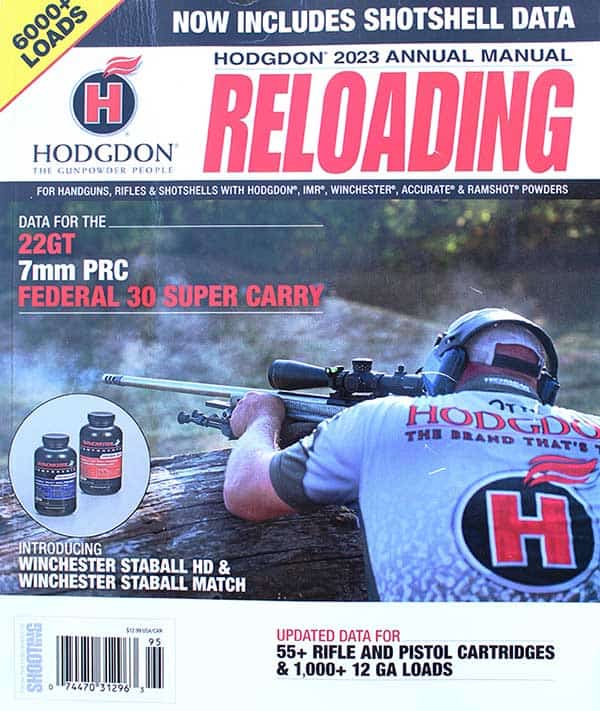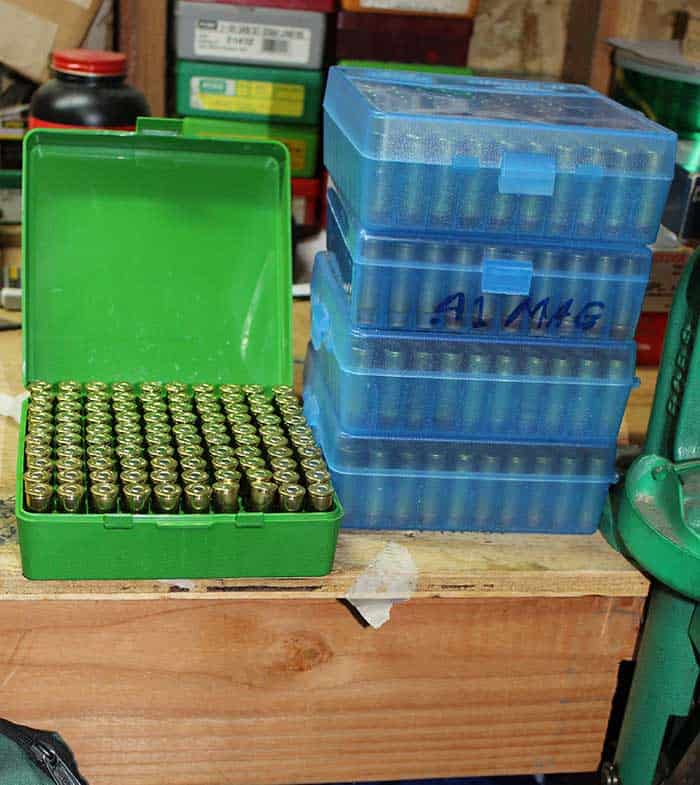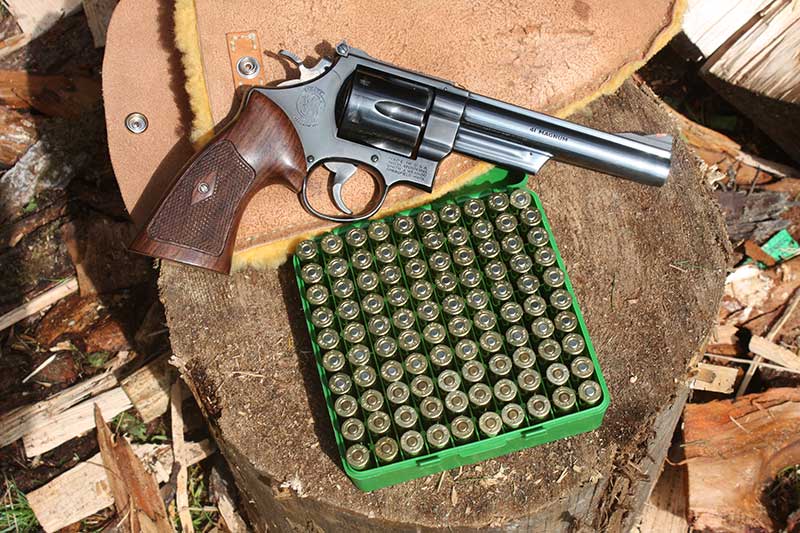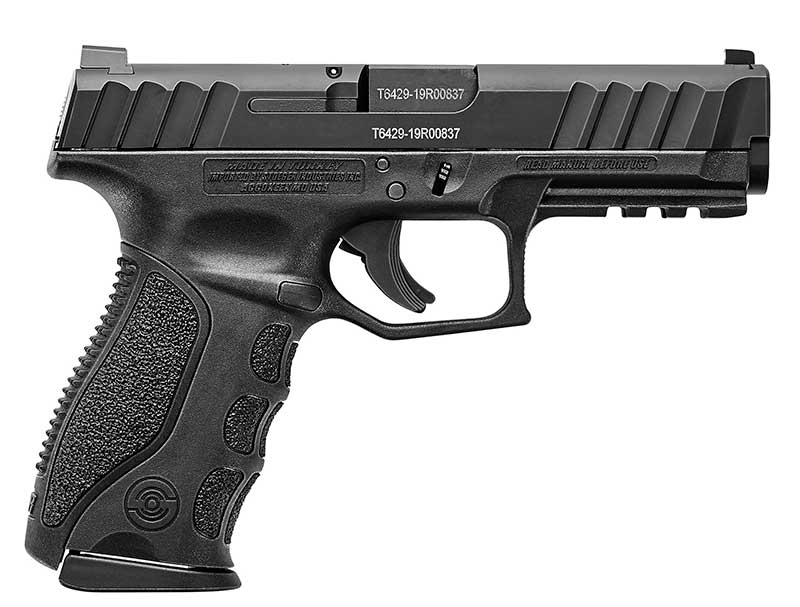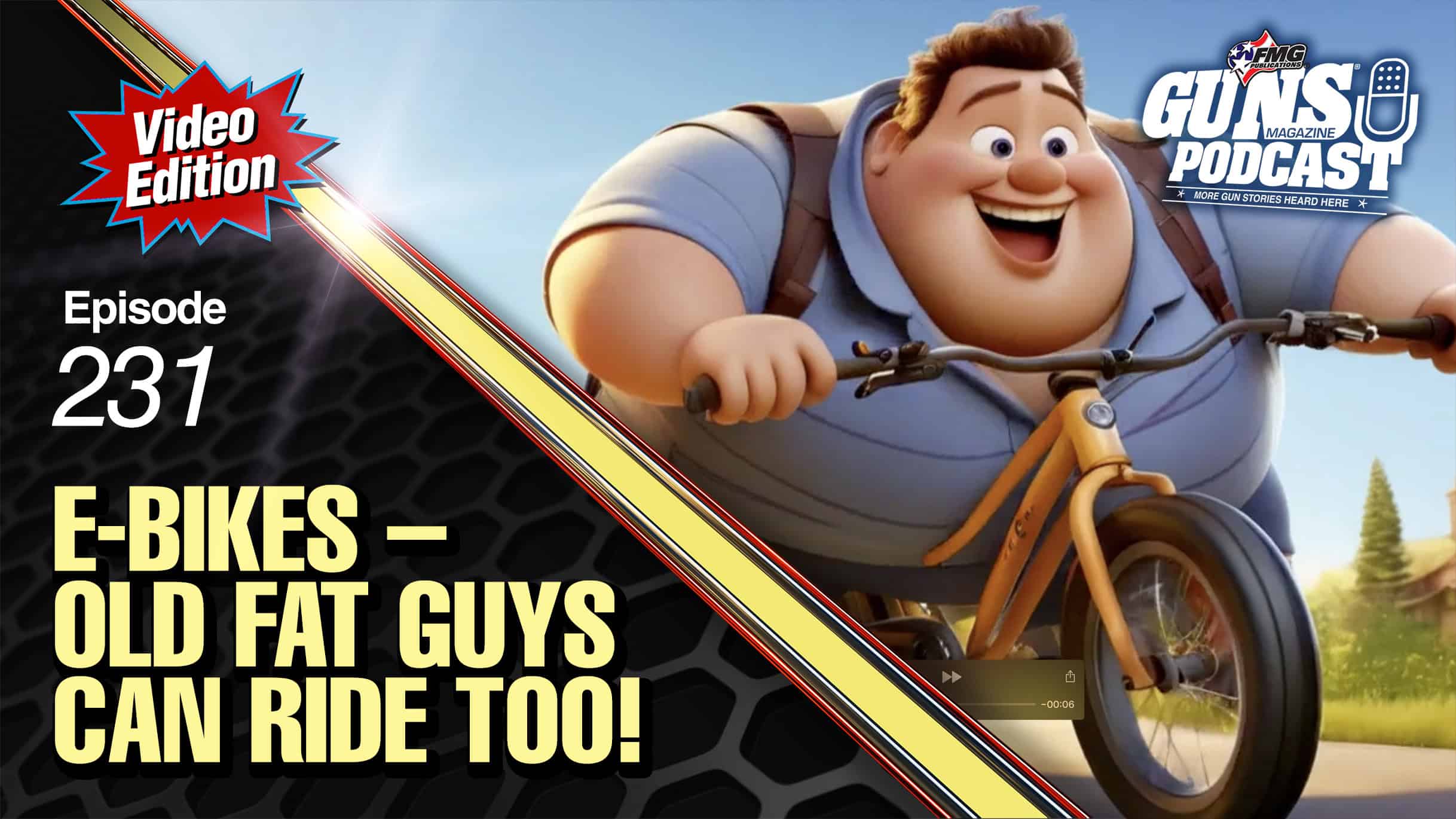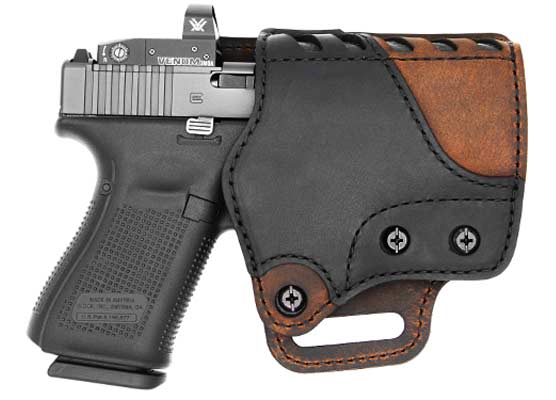Handloading Season
Nothing Says ‘Bench Time’ Like Hodgdon’s ‘Annual Manual’
In years past, it used to be the annual arrival of the L.L. Bean catalog in late summer or early autumn, which signaled the looming hunting season, but nowadays, my calendar and clock run on a different schedule, and the year officially gets rolling when Hodgdon’s Annual Manual arrives in my mailbox.
This magazine format publication was, and remains, a stroke of genius and an indispensable resource at the loading bench. I’ve got copies dating back several years, with literally thousands of load recommendations for my favorite calibers except one — the .300 Savage. This omission I cannot explain.
I’ve written about the Annual Manual before, but this year’s edition deserves a re-visit because, for the past two years, it spans 192 pages (about 24 more than in the past), with some interesting articles, a new burn rate chart, descriptions of various propellants and— did I mention this? — thousands of load recommendations.
When other powder or bullet companies might do an updated hardcover loading manual every four or five years (or longer), the Annual Manual is out every year. Sure, a lot of the data is repeated from year to year, but invariably, this magazine provides brand new data for new calibers and new propellants.
So, here’s how this works. Usually, by the end of each year, I’ve got a bunch of empty brass in various calibers out in the workshop, gathering dust and waiting until the mercury starts climbing again. I may load up two or three cartridge batches in a single sitting, and this year will be no different.
On my bench, as this is written, are several boxes worth of empty, trimmed and tumbled .308 Winchester brass, at least 50 empties in .32 H&R Magnum, a box worth of .45 Colt empties, some .30-06 Springfield and some empty .41 Magnum casings waiting for the remainder of my 200-grain LSWC pills before I order a couple of hundred 215-grainers. I also have a cardboard box containing an estimated 200-plus empties in .45 ACP into which I’ll be pressing 230-grain plated roundnose bullets, as it’s been a while since I had the chance to do some serious spring training with my 1911s.
I’m not at all sure which bunch I’ll start on, though I do want to get those .45s back in the box. Daylight hours are beginning to gradually stretch, the sun is rising a bit more to the north every morning, and I plan on spending some serious range time between firewood treks to rebuild my stove supply.
And in the middle of this will be my 2023 edition of the Annual Manual, with its easily read data. I strongly recommend getting a copy. You’ll soon be earmarking pages, circling loads that work well with your gun and have it within easy reach at the bench.
New This Year
According to the cover of this year’s edition, there is updated data for more than 55 rifle and pistol cartridges and 1,000-plus 12-gauge loads. Yep, there’s a healthy section at the rear of this year’s Annual Manual, stretching from pages 169 to 192, devoted entirely to shotgun shell reloading. In all, there are more than 6,000 load suggestions, which is no small undertaking, and it is at least a thousand more recommendations than were printed in the 2020 edition.
The cover says there is new data for the .22 GT, 7mm PRC and the Federal 30 Super Carry. You’ll find recommendations for Hodgdon, IMR, Winchester, Accurate and Ramshot powders.
I’ve never been interested in reloading shotgun shells, but over the years, I’d hazard a conservative guess my metallic cartridge loading has saved me hundreds of dollars, maybe lots more. I have certainly brewed up thousands of fresh centerfire cartridges for a number of rifles and handguns, and rarely have I produced a squib load, and — thank heavens — never threw a hot load and blew up a gun!
But even if I saved only 50 bucks, there is something special about using ammunition I’ve personally loaded to hit a small target 200 yards away or bring down a mule deer buck with a cross-canyon shot at better than 350 yards. Call it satisfaction or even pride, sprinkled with a bit of glee.
It’s not just in the pulling of a trigger; that’s the end of the process. I’m talking about being able to sit down for an afternoon or evening and carefully cranking out a couple of hundred rounds of fresh ammunition. Maybe with some mild music playing in the background, and definitely with the telephone turned off or left in the house. Loading ammunition is good therapy.
I once carefully counted the suggested loads for the .357 Magnum. At the time, I think the number topped 300, and a look at this year’s issue convinces me there are a few more in there now.
I had a good friend — he passed away a few months ago — who kept detailed records of his handloading. It made me crazy and envious at the same time since I never had that kind of discipline. Somewhere those records still exist. Maybe his son has them and is using them now. If he’d had an Annual Manual a couple of decades ago, he probably could have skipped taking such detailed notes and simply drawn circles around the selected loads he was trying.
No Shortage Here!
I didn’t make the SHOT Show this year since the same week I had agreed to testify before a state House committee on proposed gun control legislation, including one bill trying to undo Washington’s 40-year-old preemption statute. Can’t be in two places at the same time, and, well, a promise is a promise.
There is also a bill that seeks to mandate getting a permit to purchase a firearm and one to ban so-called “assault weapons.”
While preparing for that little journey into the political Twilight Zone, I started planning my reloading endeavors, and it occurred to me I’ve never had to worry about running out of ammunition. All I need to do is throw my handgun brass into a tumbler, polish it up, dry it out and get busy. For my rifle brass, I’ll resize it first, trim to length and then toss it into the tumbler. I’ll use about a capful of detergent in hot water, pour that into the tumbler with the thousands of tiny steel pins, set the timer for 2-3 hours and walk away.
Most of the people I know who do any amount of serious shooting are handloaders. It’s nothing for me to head for the range sometimes during the summer and burn through a hundred rounds, and that may be to just warm up. Years ago, when I was more active in club competitions, my .45 ACP dies seemed to be permanently installed on my progressive press.
Nowadays, instead of having to wait for a monthly gun show or driving several miles to a gun shop that stocks reloading supplies, you can order bullets online. When buying primers, get a couple of thousand at a time.
Maybe it’s impolite to chuckle, but during recent periods when others were in panic mode about ammunition shortages — believing every tinfoil hat theory as to the cause of said shortages — I and other guys with reloading presses experienced no such problem.
Speaking of SHOT
One regret about skipping the SHOT Show in Las Vegas was missing out on the annual Range Day for the media because it allows us lowly scribes to sample some of the new guns introduced for the coming year.
One of these, which caught my attention, is a new .40-caliber option for the Stoeger STR striker-fired pistol. I’m pretty much on record as not caring for striker-fired handguns, but the cartridge has interested me since the first time I had the chance to fire a Smith & Wesson 4006 many years ago. It’s an accurate cartridge with a snappy recoil and proven stopping power, and it has a loyal following.
Maybe this is more about the caliber than the pistol, but Stoeger hasn’t disappointed me so far. The STR has been available in 9mm, but this is the first “shorty forty” in the series, with four model variations, and they’re priced for people on a budget (and these days, who isn’t?).
The specs suggest this pistol is for packin’ with a 4.17-inch barrel, OAL of 7.44 inches, magazines capable of holding 10 or 12 rounds, respectively, and it weighs 28 ounces. It’s got a steel barrel and slide and a polymer grip frame. There’s an accessory rail ahead of the trigger guard, the slide has front and rear cocking serrations, and there is an optics-ready option. There’s a loaded chamber indicator, reversible magazine release, and the slide is finished with black Nitride.
For more, visit StoegerIndustries.com
